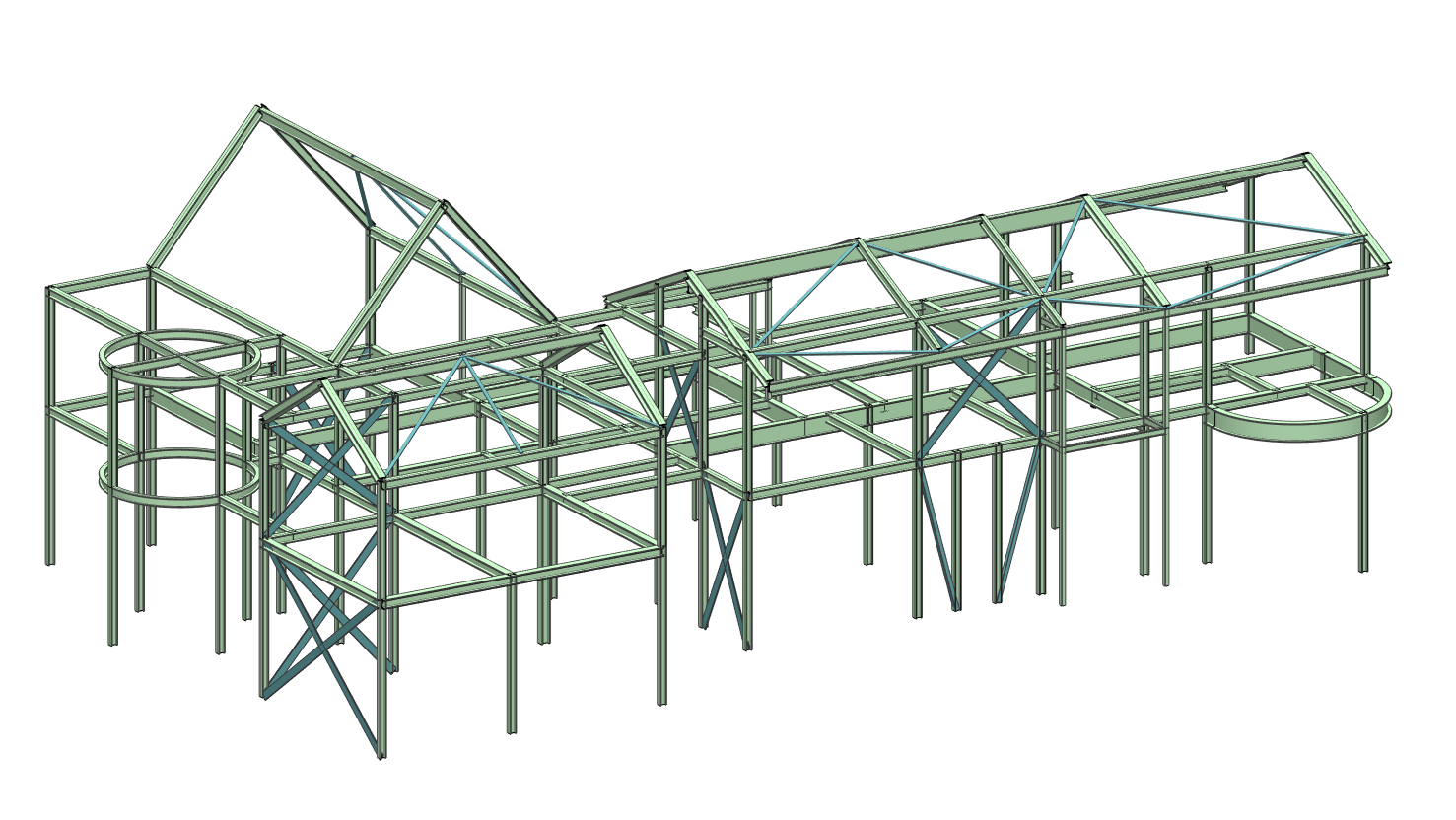A Hillside Home
SOLID are working on a new country house in Gloucestershire with Tyack Architects. Deeply connected to its local context, the design was developed as an homage to the traditional farmstead with its various agricultural built forms and materials.
References to modern and traditional barns, silos and farmhouses can be found in this complex design. Developing a cost effective structural solution for the design with its many junctions and interfaces was an interesting challenge we relished!
One of the biggest challenges we faces is that despite its fragmented external appearance, the internal layout has been designed to offer the best of modern open plan living, making the most of the opportunities presented by the roofscape for voluminous vaulted ceilings. This makes for quite a complex steel frame with many transfer structures.
The client wishes to achieve a clean crisp modern aesthetic and the structure has to become largely invisible with no fussy connecting details. The desire for maximised glazed openings and ceiling heights left us with quite challenging structural zone depths to work with. In addition, there is a substantial slope diagonally across the site.
This results in the final ground levels much higher at one corner of the pool relative to the opposite corner. Careful consideration is required of the differential heave that will result due to varying depths of overburden removed across the site. Additionally, the horizontal loads due to varying proposed ground levels results in unbalanced forces on the structure causing differential settlements.
Whilst heave and differential settlements can only be estimated, by using the soil-structure interaction facility within Scia Engineer, we are able to get better estimates of the same and so are able to design a more economical structure to suit the site conditions whilst coordinating with the architects details and fulfilling the clients aspirations. The Scia model image shows the differential displacements across the RC structure.
The design is developed with strong sustainability principles in mind. Highly insulated with robust airtightness detailing, it is taking a fabric first approach. Triple glazing throughout completes the external fabric. The availability of locally sourced construction materials have played a large part in the selection of materials.
Grey water will be recycled for toilet flushing and irrigating the garden through a series of water butts whilst a ground source heat pump and PV solar panels are being considered as clean energy sources. The design is not only attempting to optimise the sustainability of the built form but also how the building will be used to reduce its carbon footprint through the provision of an electric car charging point in the carport.



